Abstract
Neutrophil transmigration across intestinal epithelia is thought to contribute to epithelial dysfunction and characterizes many inflammatory intestinal diseases. Neutrophils activated by factors, normally present in the lumen, release a neutrophil-derived secretagogue activity to which intestinal epithelia respond with an electrogenic chloride secretion, the transport event which underlies secretory diarrhea. Using sequential ultrafiltration, column chromatographic, and mass and Raman spectroscopic techniques, neutrophil-derived secretagogue was identified as 5'-AMP. Additional studies suggested that neutrophil-derived 5'-AMP is subsequently converted to adenosine at the epithelial cell surface by ecto-5'-nucleotidase and that adenosine subsequently activates intestinal secretion through adenosine receptors on the apical membrane of target intestinal epithelial cells. These findings suggest that this ATP metabolite may serve as a neutrophil-derived paracrine mediator that contributes to secretory diarrhea in states of intestinal inflammation.
Full text
PDF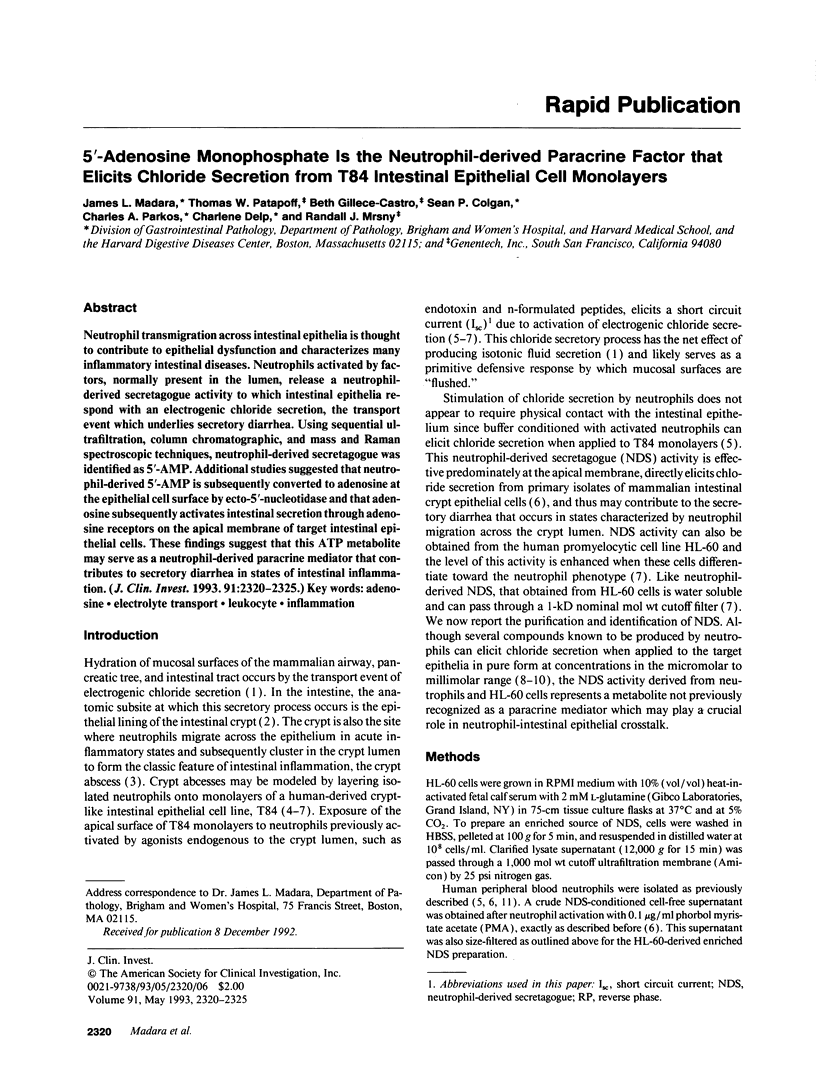
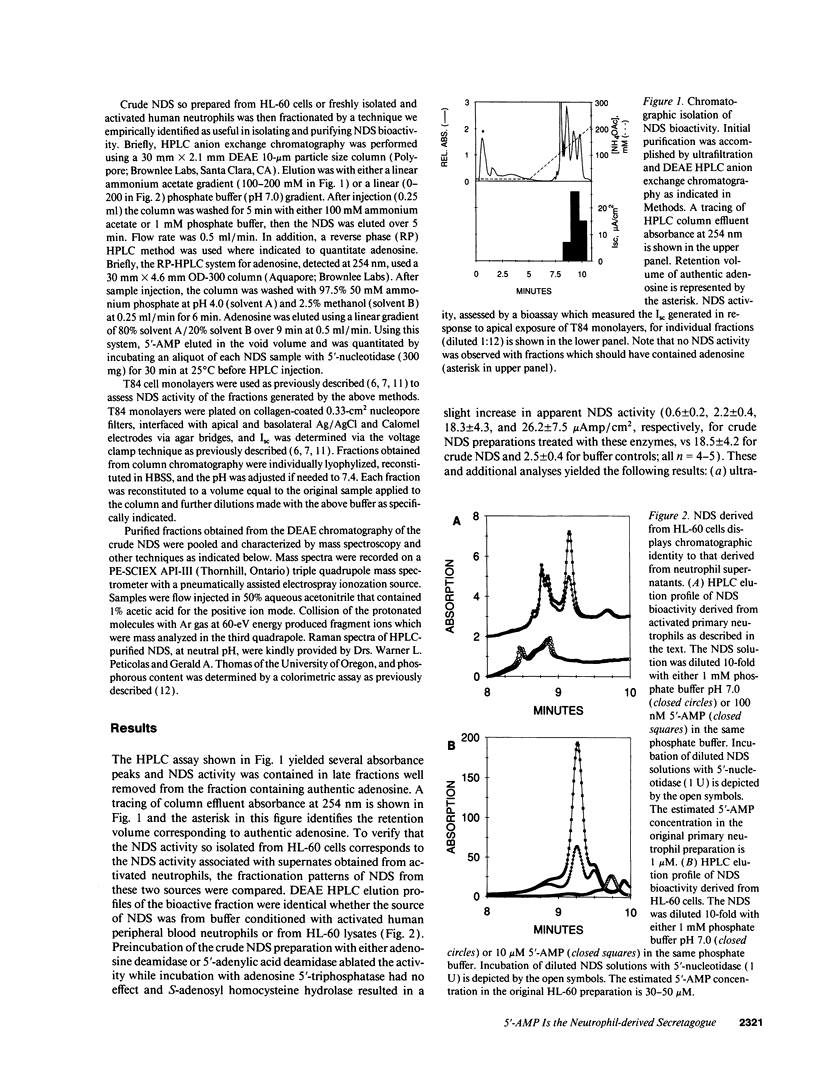

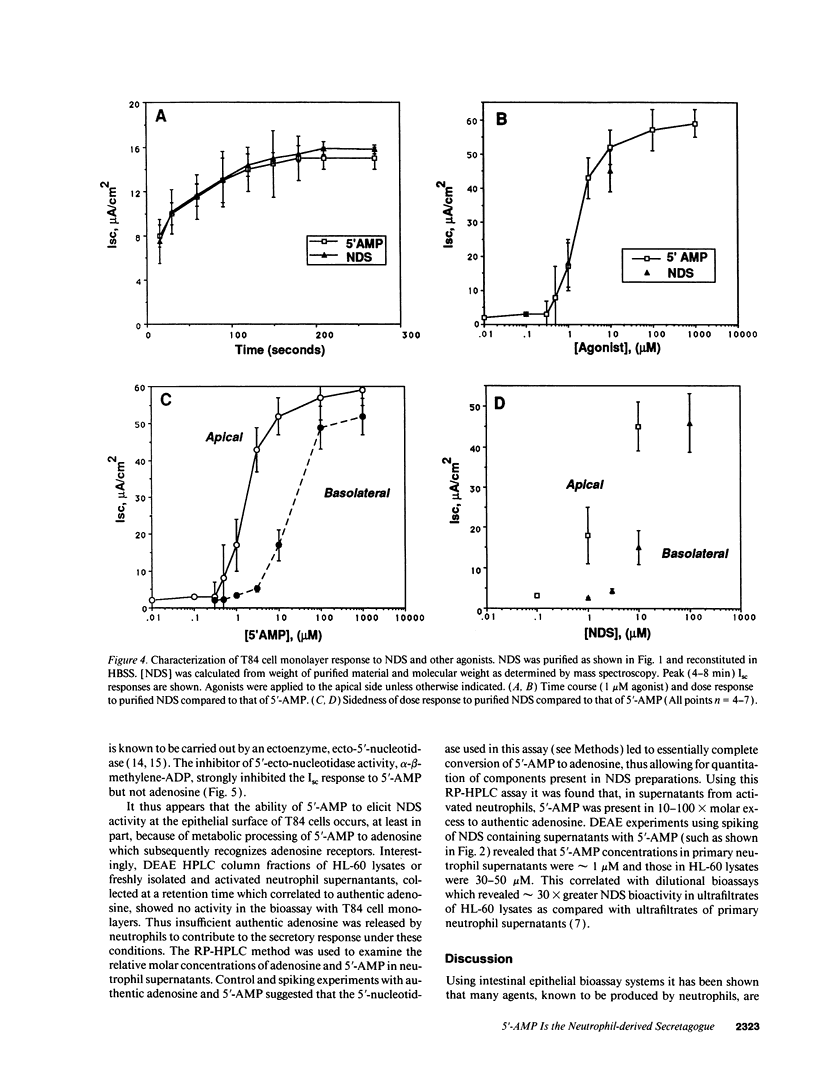
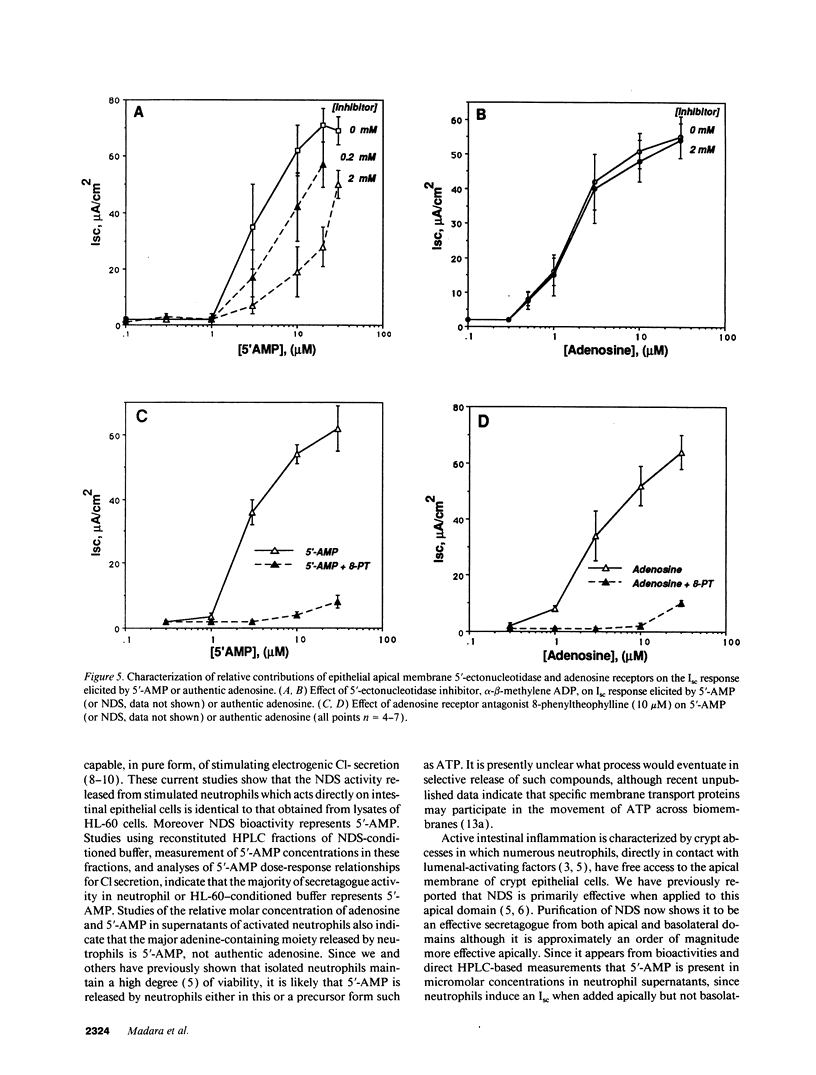
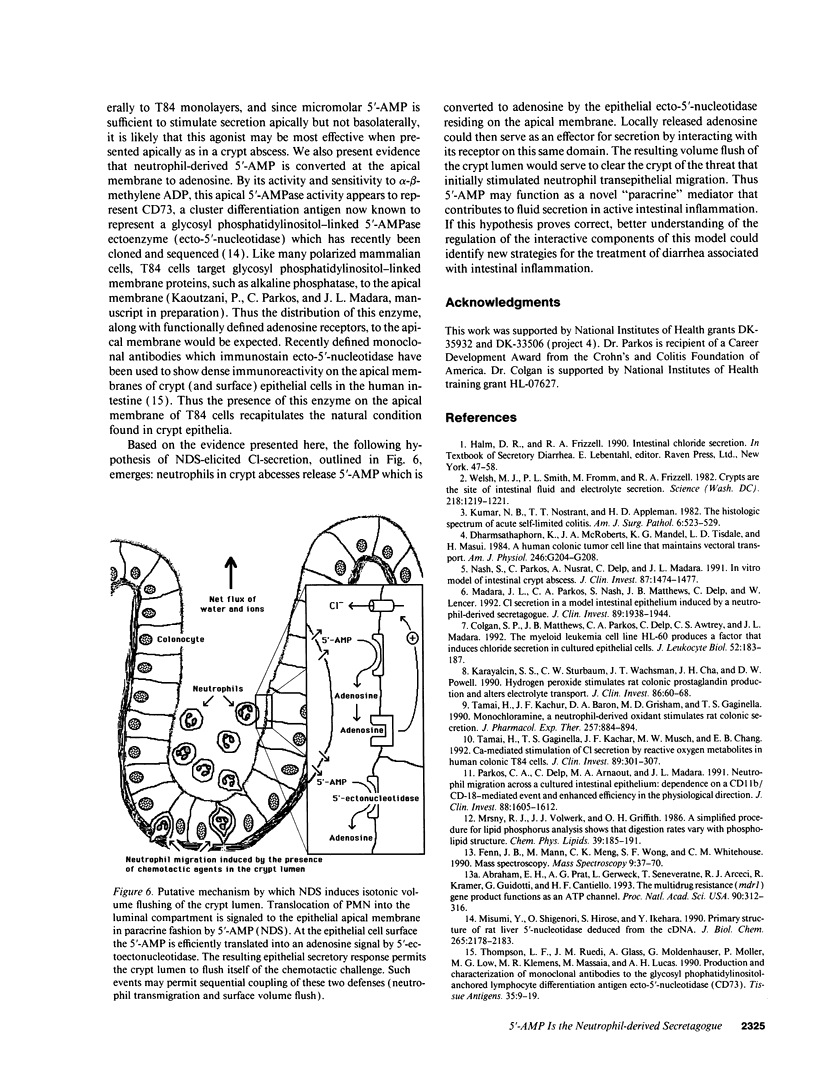
Selected References
These references are in PubMed. This may not be the complete list of references from this article.
- Abraham E. H., Prat A. G., Gerweck L., Seneveratne T., Arceci R. J., Kramer R., Guidotti G., Cantiello H. F. The multidrug resistance (mdr1) gene product functions as an ATP channel. Proc Natl Acad Sci U S A. 1993 Jan 1;90(1):312–316. doi: 10.1073/pnas.90.1.312. [DOI] [PMC free article] [PubMed] [Google Scholar]
- Colgan S. P., Matthews J. B., Parkos C. A., Delp C., Awtrey C. S., Madara J. L. The myeloid leukemia cell line HL-60 produces a factor that induces chloride secretion in cultured epithelial cells. J Leukoc Biol. 1992 Aug;52(2):183–187. doi: 10.1002/jlb.52.2.183. [DOI] [PubMed] [Google Scholar]
- Dharmsathaphorn K., McRoberts J. A., Mandel K. G., Tisdale L. D., Masui H. A human colonic tumor cell line that maintains vectorial electrolyte transport. Am J Physiol. 1984 Feb;246(2 Pt 1):G204–G208. doi: 10.1152/ajpgi.1984.246.2.G204. [DOI] [PubMed] [Google Scholar]
- Karayalcin S. S., Sturbaum C. W., Wachsman J. T., Cha J. H., Powell D. W. Hydrogen peroxide stimulates rat colonic prostaglandin production and alters electrolyte transport. J Clin Invest. 1990 Jul;86(1):60–68. doi: 10.1172/JCI114715. [DOI] [PMC free article] [PubMed] [Google Scholar]
- Kumar N. B., Nostrant T. T., Appelman H. D. The histopathologic spectrum of acute self-limited colitis (acute infectious-type colitis). Am J Surg Pathol. 1982 Sep;6(6):523–529. doi: 10.1097/00000478-198209000-00004. [DOI] [PubMed] [Google Scholar]
- Madara J. L., Parkos C., Colgan S., MacLeod R. J., Nash S., Matthews J., Delp C., Lencer W. Cl- secretion in a model intestinal epithelium induced by a neutrophil-derived secretagogue. J Clin Invest. 1992 Jun;89(6):1938–1944. doi: 10.1172/JCI115800. [DOI] [PMC free article] [PubMed] [Google Scholar]
- Mrsny R. J., Volwerk J. J., Griffith O. H. A simplified procedure for lipid phosphorus analysis shows that digestion rates vary with phospholipid structure. Chem Phys Lipids. 1986 Jan;39(1-2):185–191. doi: 10.1016/0009-3084(86)90111-8. [DOI] [PubMed] [Google Scholar]
- Nash S., Parkos C., Nusrat A., Delp C., Madara J. L. In vitro model of intestinal crypt abscess. A novel neutrophil-derived secretagogue activity. J Clin Invest. 1991 Apr;87(4):1474–1477. doi: 10.1172/JCI115156. [DOI] [PMC free article] [PubMed] [Google Scholar]
- Parkos C. A., Delp C., Arnaout M. A., Madara J. L. Neutrophil migration across a cultured intestinal epithelium. Dependence on a CD11b/CD18-mediated event and enhanced efficiency in physiological direction. J Clin Invest. 1991 Nov;88(5):1605–1612. doi: 10.1172/JCI115473. [DOI] [PMC free article] [PubMed] [Google Scholar]
- Tamai H., Gaginella T. S., Kachur J. F., Musch M. W., Chang E. B. Ca-mediated stimulation of Cl secretion by reactive oxygen metabolites in human colonic T84 cells. J Clin Invest. 1992 Jan;89(1):301–307. doi: 10.1172/JCI115576. [DOI] [PMC free article] [PubMed] [Google Scholar]
- Tamai H., Kachur J. F., Baron D. A., Grisham M. B., Gaginella T. S. Monochloramine, a neutrophil-derived oxidant, stimulates rat colonic secretion. J Pharmacol Exp Ther. 1991 May;257(2):887–894. [PubMed] [Google Scholar]
- Thomson L. F., Ruedi J. M., Glass A., Moldenhauer G., Moller P., Low M. G., Klemens M. R., Massaia M., Lucas A. H. Production and characterization of monoclonal antibodies to the glycosyl phosphatidylinositol-anchored lymphocyte differentiation antigen ecto-5'-nucleotidase (CD73). Tissue Antigens. 1990 Jan;35(1):9–19. doi: 10.1111/j.1399-0039.1990.tb01750.x. [DOI] [PubMed] [Google Scholar]
- Welsh M. J., Smith P. L., Fromm M., Frizzell R. A. Crypts are the site of intestinal fluid and electrolyte secretion. Science. 1982 Dec 17;218(4578):1219–1221. doi: 10.1126/science.6293054. [DOI] [PubMed] [Google Scholar]


